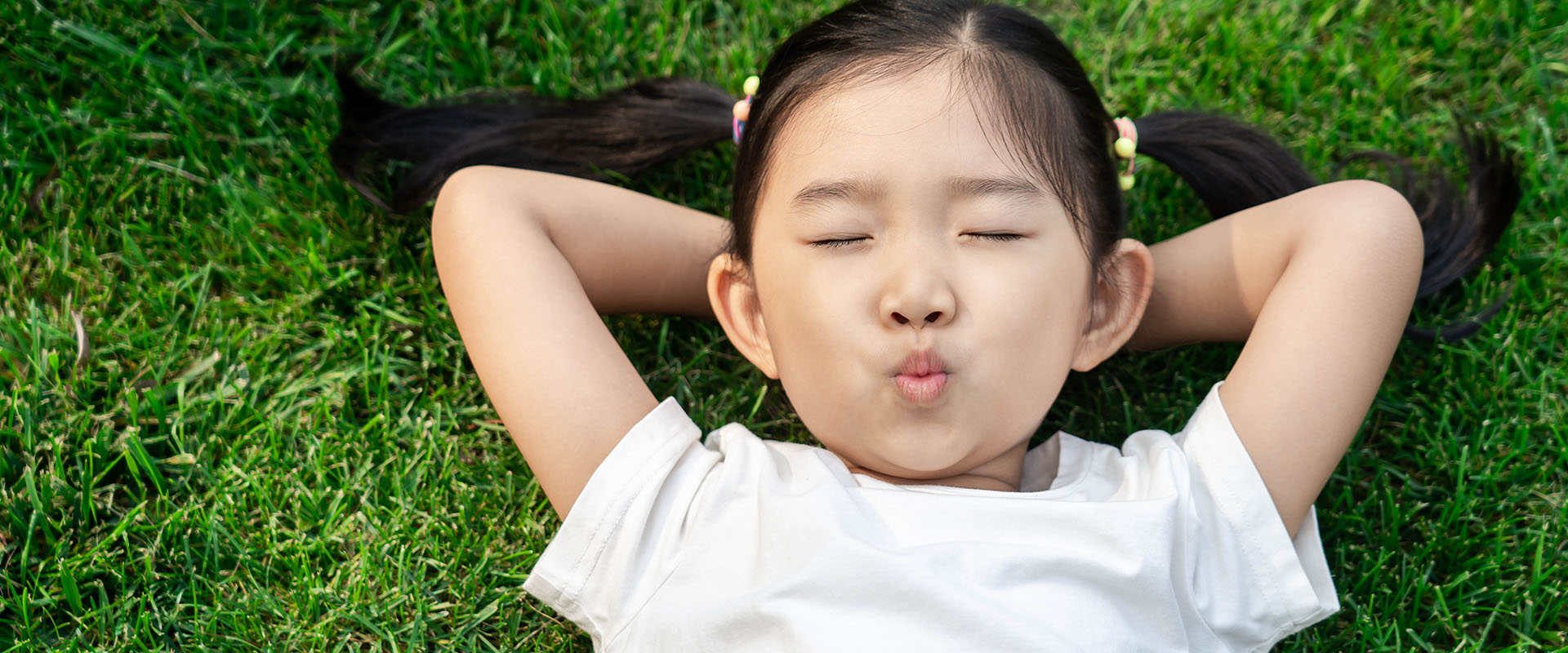Meditation, Mindfulness and Learning in Nature

Not only is the great outdoors a wonderful classroom for learning, it’s also host to many health benefits that you can introduce to your little one in their early years.
Spending time outdoors can teach both you and your child more than you might realise. While many parents take their children outside to let off steam, or to test their sense of risky play, nature can also help us to relax, regulate and become more present in the moment. Learning to use nature as a tool for mental health is a great gift to be able to share with your child at any age and is one that they can carry all the way into adulthood.
Our early years experts advise on how you can help introduce the correlation between the outdoors and mindfulness to your child by trying these mindful techniques when out and about - perfect for a lazy afternoon or to wind down before bedtime.
Four Outdoor Mindfulness Activities
Engage the Senses
This activity is a holistic sensory experience. The idea is for you and your little one to simply be one with nature and to enjoy its wonders through your senses - eyes, ears, touch, smell and breath!
Help your child to be present in the moment through comfort and closeness while being in nature. Point out leaves or have leaves on hand to touch. You can also place yourselves in a seated or laying down position under a tree and look up at the patterns and colours that its branches and leaves make. In this moment, you can either encourage your child to speak about, point out, and identify what they’re engaging with, or you can encourage them to embrace silence as they engage with listening and relaxing.
Breathe Together
When winding down outdoors, you can guide your child through a few simple rounds of breath. Do it with them, and make your breaths exaggerated so that they know it’s a conscious exercise. You can start by saying ‘let’s take a few rounds of big breaths to help us relax our bodies and minds’. This will introduce the activity, as well as explain its purpose. Then follow it up with the instruction: ‘take a big breath in through your nose, and a big breath out through your mouth’, while demonstrating. You can do these three or four times and then ask them how it made them feel.
Introducing this exercise in a peaceful outdoor environment can help your child if they need to take deep, calm breaths at other times, perhaps after becoming agitated or scared. Remind them to think back to the grass, trees and sky.
Take a Walk on the Wild Side
If you’re out on a nature stroll, the collection of nature resources is another wonderful way to help support your child explore nature and engage with the present moment. Give them opportunities to pick up sticks, pebbles, feathers, acorns, etc. Be patient and allow them the time and freedom to revel in the environment. If your child is non-mobile, you can gather these natural objects for them to inspect and interact with.
Listen
For older children, remind them about the things that make them good at listening (e.g. keep quiet, have ears and eyes ready). Invite your child to show you how good they are at listening by demonstrating how to listen. You can encourage them by talking enthusiastically about the different sounds you can hear and ask them if they can hear them too – and to add to the list. This activity helps to keep their minds calm and focused on the ‘now’.
For young babies, you may react and recall through their coos and pointy fingers.
By spending this time outdoors, you’ll help to:
- Build and strengthen your relationship through mindful togetherness
- Teach your child to be calm, and to embrace quiet
- Equip your child with breathing techniques
- Sharpen your child’s hearing and spoken language. The environment will prompt new words which you wouldn’t normally say or hear indoors.
- Heighten your child’s ability to tap into their senses
- Learn about nature, patterns, and colours within our natural environment (throughout all seasons)
Ways to Extend the Activities
- Think about using soothing language such as breathe, calm, relax, still and quiet.
- Lie down next to your child and just be with them, breathing in the fresh air. You can even do this in the back yard if you have one.
- 2-year-olds / Listening skills - your little one could use ‘cupped ears’ or make big ears on headbands to wear to encourage hearing different sounds.
- After having enjoyed some relaxing time in nature, help your child to make a list of all the sounds they can remember. The list can be in words or pictures and prompted by replaying sounds recorded. Ask them what made each sound and encourage them to try to make the sound themselves.
If you enjoyed this article and found it to be useful, you can check out more of our early childcare resources in our Family Resource Zone!
And, if you’re not yet a Bright Horizons parent, but are interested in what our nurseries can offer your child on their exciting educational journey, book a personal tour at your local nursery today!





